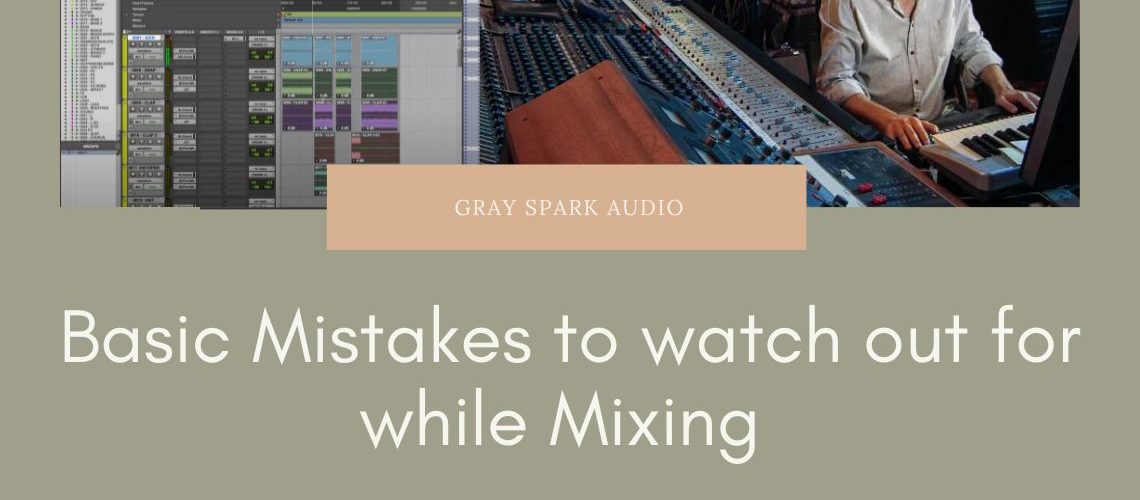
It’s no secret that the music industry is oversaturated with budding artists and musicians. Standing out from the crowd with your recordings can be difficult, but there are a few key things you can do to make your music sound more professional. If you want to get better at music production join top music production course in India.
In this blog post, we’re going to look at seven common music production mistakes that can make your songs sound amateurish. By avoiding these mistakes, you’ll be well on your way to sounding like a pro.
Let’s begin!
(Mistakes to look out while Mixing and Music Production)
Overusing Plugins
Most digital audio workstations (DAWs) have lots of plug-ins. When mixing, the temptation is to put many more plugins on a track than necessary.
This is often due to inexperience. When you don’t understand the reasoning behind your mix decisions, you start blindly plugging in plugins. The problem is that you start downloading plugins to fix the problems caused by the plugin you used earlier in the chain.
Another way to easily overuse plugins is by not understanding how to use the plugin.
For example, compression is often overused and misunderstood by novice mixers.
Compression has this way of making things seem louder. Louder always sounds better to our ears. However, louder also means that the sound is more forward and takes up more space in the stereo field. This leaves less room for other instruments and throws the mix out of balance.
Overcompression also has an obvious trace that screams amateurish. It can cause sounds to pump up and breathe, which can be very musical if done right, but more often than not it creates an unnatural movement in the sound that can distract listeners. Also, too much compression kills all dynamics and makes tracks sound flat and lifeless.
Equalization is another plugin that is often misused by amateur mixers. You can’t go from the “EQ Cheat Sheets” that a “guru” might offer you, because each sound has its own sonic character. You need to be aware of the musical elements in each part of the frequency range, but standardizing this across all sounds is a huge mistake.
You have to use your ears and know exactly what frequencies each sound needs more and less.
You also can’t forget that you’re trying to balance all the tracks together to create a balanced whole.
(Mistakes to look out while Mixing and Music Production)
Not having a Reference Track
You obviously do not absolutely need a reference track to mix, but it is advisable to have a reference track in mind coz that would be your starting point to build your mix and to go back to it and A B test it with your mix and get it as close to it.
It’s good to have a reference track to get the starting point to your mix and build it accordingly.
There will never be exact reference tracks similar to the song but you can draw similarities between low-end, vocal levels, basic balance of instruments, brightness/top end. Listening to these and drawing conclusions and shaping your mix is the way how referencing and mixing works.
We don’t necessarily replicate them, but instead use them as a guide to see if the elements of our own project are well balanced, if we have too much bass or treble, if the instruments are properly spaced, or if the stereo image of our project is wide enough.
In conclusion, using reference tracks won’t stop you from having your signature sound, but will actually help you find it, as you can compare your work to them and decide how similar or different you want your mixes to sound.
(Mistakes to look out while Mixing and Music Production)
Too much Lows and Tops
The common mistake seen by many rookie engineers is having more lows or having more high-end frequencies in their mixes. Obviously it feels good when that sub frequencies hit you or that brightness makes it seem louder and better but its not always right, if not done right.
The headroom gets affected when mastering the song and you would want to give enough headroom for the mastering engineer to work on making it louder in all aspects.
(Mistakes to look out while Mixing and Music Production)
Mixing in Solo
Mixing in solo is another commonly seen mistake at most of these sound engineering schools, where students mix soloing each track. You solo each track EQ and compress it and make it sound the best but your listener is interested in the song and not that one track. If your acoustic guitar track sounds good on solo but does not fit with the electric piano then the mix will fall apart. The instruments need to be mixed and processed with reference to the whole track or other instruments and that makes it more cohesive with the other elements.
When tweaking EQs, faders, and compressors, listen to the context so your decisions point in the same direction to improve the overall result, rather than improving the specific sound itself please be so.
(Mistakes to look out while Mixing and Music Production)

